Hi everybody ?
We continue to discover for you. Our container house on today’s tour is from Argentina.
They knew of its existence in other countries, and were encouraged to carry out a similar project in Tres Arroyos. They bought four containers, and with the professional direction of Nicolás Brüel, Miguel and Valeria Guisasola fulfilled their dream.
The particular home, the only one of its kind in the city, is in the Country Zurita and is truly attractive and comfortable, as “The Journalist” could see.
Examples of houses built with maritime containers are gaining more and more predicament in Argentina and other parts of the world, although it is fair to recognize that in Tres Arroyos the houses built under this concept are very scarce or almost non-existent.
However, “The Journalist” managed to find one of them in the Country Zurita. There, Miguel Guisasola, his wife Valeria and their two children have been living for a couple of months in a property designed primarily around the recycling of such containers.
To develop the project, they had the professional support of the architect Nicolás Brüel, who is also a friend of the family.
The novel idea (at least in Tres Arroyos) is worthy of being explained, since it constitutes an economic, practical and even ecological variant of construction. Here, the details.
INNOVATIVE, BUT NOT SO MUCH
How did they come up to face the construction of their house with such a method?
Valeria: One day, enjoying a family meal, my brother (who was visiting Tres Arroyos), said that a friend was about to start the construction of a stove with a container. Interested in the novelty, we began to consult on the subject, and it seemed a very applicable idea. As is often the case in these cases, we begin to investigate and collect information online, basically with the premise of comparing some constructive models.
Miguel:When we started searching, we found that there were really interesting things to do, that there was no limit to creativity or the possibility of putting together different designs. Each one puts the quality you want of openings, floors, or has thousands of different ways to locate the containers.
Valeria:There we realized that we were not as innovative as it seemed at first, because what in Tres Arroyos today represents a novelty, in other parts of the world is being used a long time ago, and with very good verifiable results. From that reliability that the construction guarantees, we are encouraged to carry it out. We believe that the idea is very valuable, especially if you have good professional support from an architect, as in our case it happened with Nicolás. Container houses in European countries or in Japan do not represent anything new, and we decided that it could be a feasible alternative here too.
What was the fundamental reason that decided them towards this alternative?
Miguel:The fundamental reason why we choose this construction alternative has to do with speed. That is a very important point in favor, but also the economic issue is not a minor fact. The costs are reduced by an interesting percentage compared to a traditional house. To these two factors, in our specific case we have to add a third party, and that is that the land we inhabit is in a very low place in the country, so we think that a good idea would be to lift it to avoid inconvenience with water. If we had to level it based on a conventional construction, the cost of money would be very expensive. Therefore, the assembly of a structure supported by pillars meant an advantage of costs and practicality.
Where and how did they get the containers?
Valeria: We consult in two different places. We asked first in a container storage place located in the town of Brandsen, but then we collected the data of a person from Cordoba who sold them in the capital, in a tax deposit. This last option seemed viable. We find out by different measures; With regard to length, the containers are presented in two different sizes, 6 and 12 meters, while the height is also variable according to each case. The widths are always the same.
Miguel:We decided to buy three containers 12 meters long and 2.65 meters high, and another 6 meters long. With this material, we have a house that has 117 square meters covered and 26 semi-covered. It is a truly spacious place.
Valeria: In parallel, we were already developing the pre-construction project with Nicolás, who designed the house before acquiring the containers.
FROM DREAM TO PAPER, AND THEN THE SHEET
How was the final draft of the project put together?
Nicolás: Most of the containers were used to build covered spaces, but there is a semi-added one, in which the sheet of its sides served to make a deck and the entrance hall to the house. That way all the existing material was used. It is also worth clarifying that at the junction of two of them an annex of approximately twenty meters was made, to be able to couple them conveniently and incidentally generate a slightly wider environment, which corresponds to one of the bedrooms.
Did difficulties arise in its concretion?
Nicolás: Difficulties no, but from the professional point of view, perhaps the greatest challenge was to comply with the minimum measures for each type of environment required by the current Municipal Planning Code. To give a concrete example: a container would not only reach the values of those minimum measures that it mentioned, so we had to make some modifications to the structure of the house to approve the plans.
Have you ever developed a similar project?
Nicholas:For me as an architect it is the first project of this kind that I do. I must confess that at first I was a little reluctant to the idea, I tried to dissuade them to think of another constructive method, but both Miguel and Valeria were very determined to do so. It turned out a whole learning, on the fly, because we didn’t know how it could respond structurally or thermally. We had to do a bit of trial and error, find out different constructive modalities. It is worth mentioning that from the aspect of the solidity of the construction it is highly reliable, let’s not forget that the material of the containers is prepared to travel long distances at sea, it is resistant to very adverse weather conditions. What was fundamentally to be resolved was the thermal issue.
How long did the work demand?
Nicolás: The work lasted about six months, from the moment the containers were placed until the endings were completed. There was a previous task of foundation, to raise the level of the house and avoid possible floods, as Miguel mentioned previously. If we look at it carefully, with a little previous experience it would be possible to do it in less time yet, what happens is that we were learning on the fly and we didn’t want to make mistakes.
Were they satisfied with the final design?
Miguel: We really liked the house design that Nicolás presented, and by taking some walls out of the containers, more spacious environments remained.
Valeria: It is a house with all the technological attachments, comfortable, and to which in the future you can make extensions, simply by cutting the existing sheets and adding others.
Nicolás: In that sense, the container house project has a lot of versatility. It is true what Valeria says; it would be less conflictive to enlarge a building structure of this type than a conventional one, of bricks.
THE “FEAR” TO THE NEW
What opinion generated within the Country Zurita this novel idea? What did the neighbors say?
Miguel and Valeria: When the idea was learned, the country’s neighbors were quite reluctant; but then they realized that we were going to put a lot of effort into the project, they knew him better and they ended up convincing, at least the majority. We assume that the fear of the new stopped them, as usually happens, and they thought that aesthetically the house was going to be very out of focus of the architectural style of the place. Perhaps what caused rejection was to observe the beginning of the work, where there were four unsealed containers next to each other. Logically, the finished product differs a lot from it, and we believe that it has been a very nice design, although everything is in a matter of taste.
Does it remain to complete some environment of the original project?
Miguel: The house foresees the future extension of the current deck, which will surround a good part of the structure and integrate the entire exterior of the house. Apart from that, for now we do not plan to add more covered meters.
The “container houses” are also frequently mentioned as an example of environmentally friendly homes…
Valeria: In line with the municipal regulations that prevent the realization of wells for sewage, the house has an ecological system to eliminate them, through the use of a digester chamber, transforming the so-called “black waters” into gray, and taking advantage of them even to incorporate them into the irrigation system. On the other hand, the house has provision of hot water through solar energy, while heating (wood) is based on a salamander system that distributes heat to the rest of the home, while the kitchen and stove work with electricity, which prevents the use of gas. The house is super sustainable, not polluting at all.
What generated you from the professional point of view to specify this project?
Nicolás: I found it very pleasant to develop it. At first it was a challenge and generated some doubts, but then it meant a very pleasant task, especially considering that it is about friends. It was something different, and I congratulate you for the decision to make an avant-garde project in a place where we are rather conservative.
Living in a Container explores projects made with shipping containers around the world and shares them for you.
Don’t forget to take a look at the structures made with other amazing shipping containers on our site!
We invite you to send in your story and container homes photos too so we can re-share and inspire others towards a simple life too. Thank you!
You can share this using the link and social media re-share buttons below. Thanks!
» Follow Living in a Container on Social Media for regular shipping container house updates here «
Source : El Periodista de Tres Arroyos

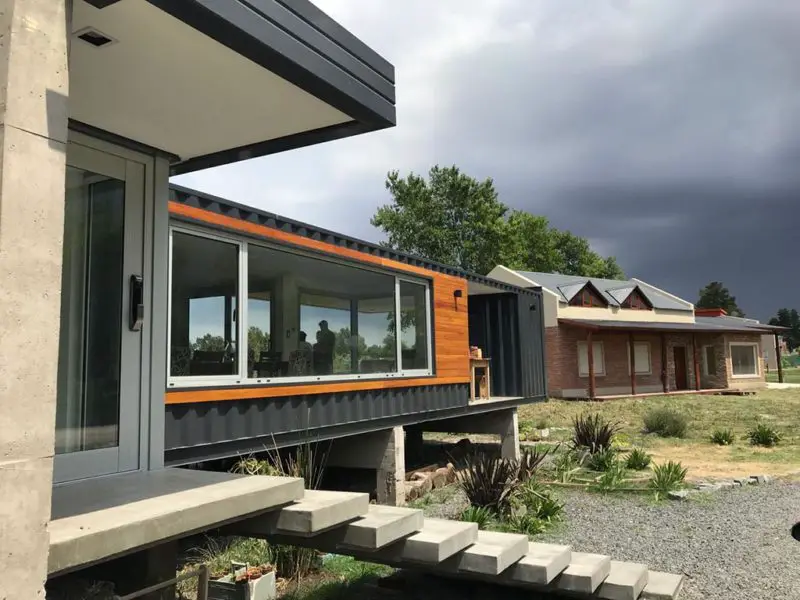
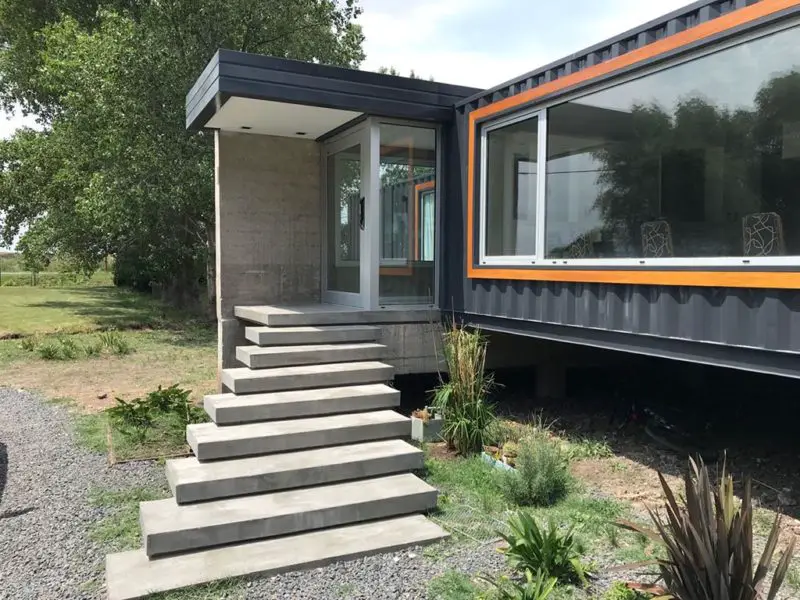
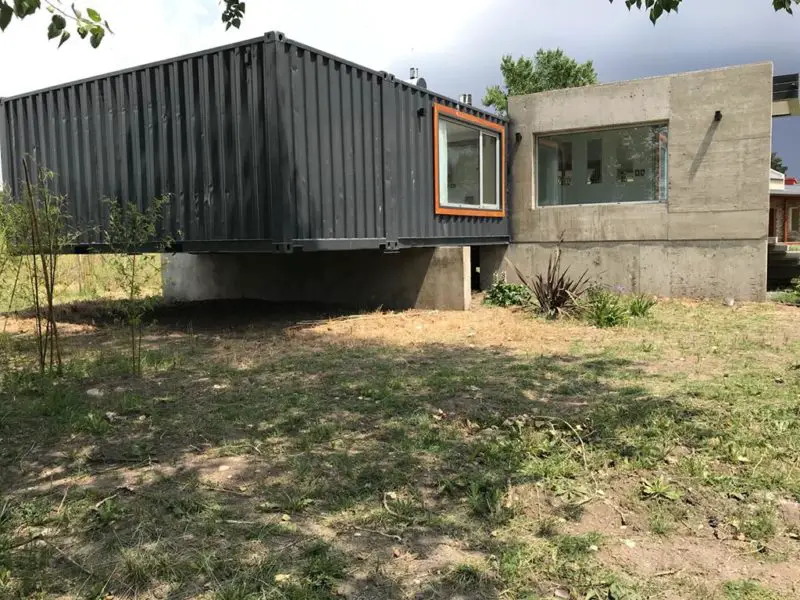
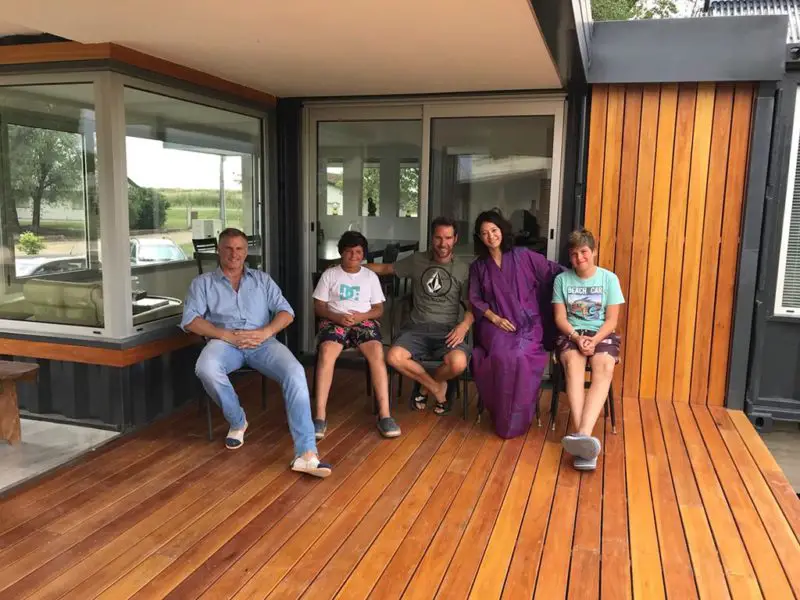
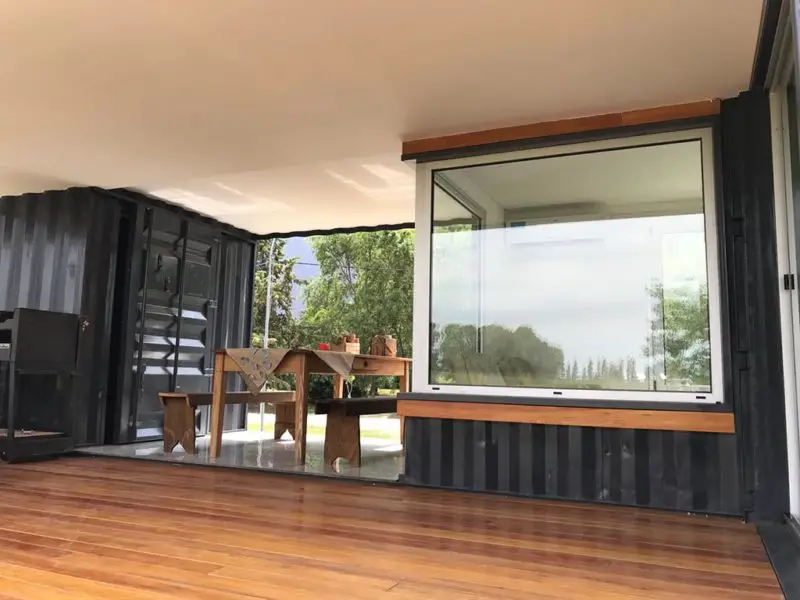
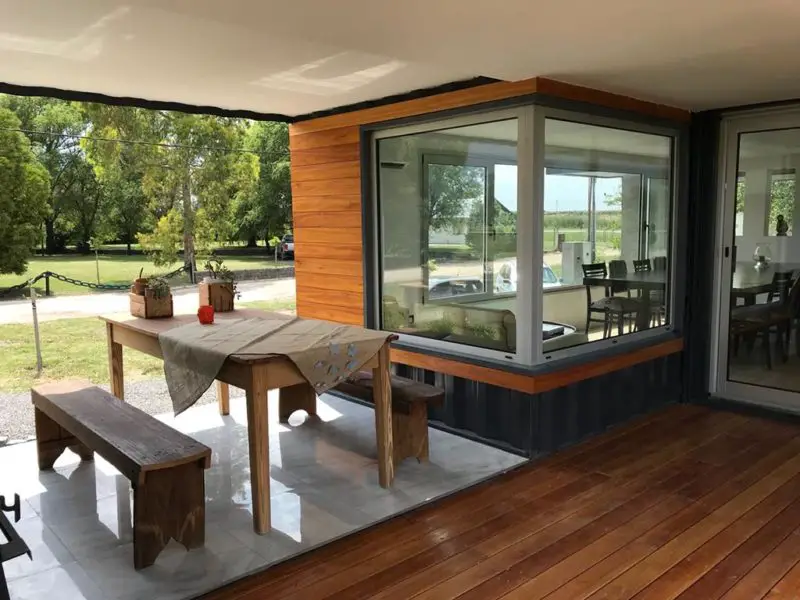
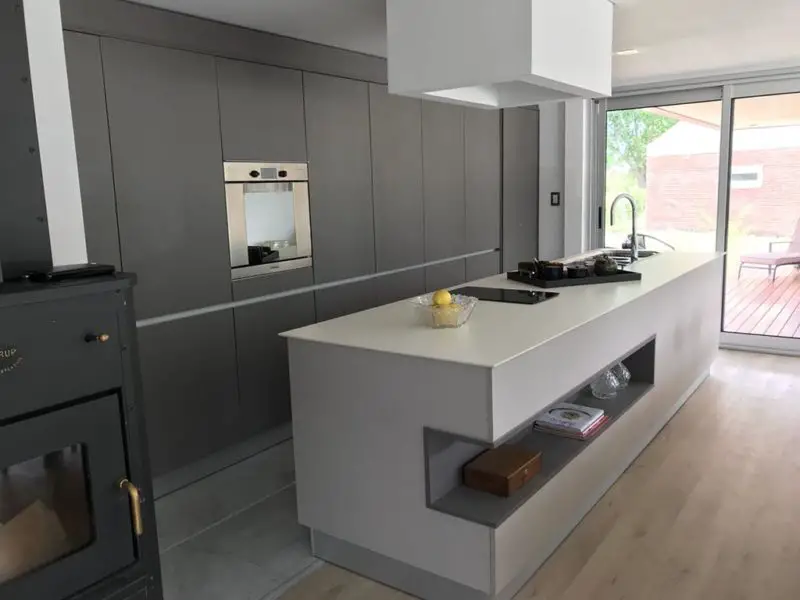
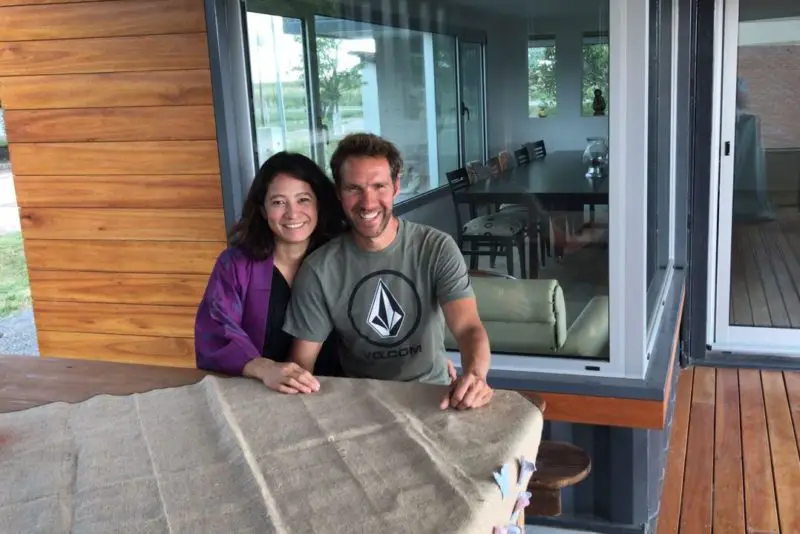
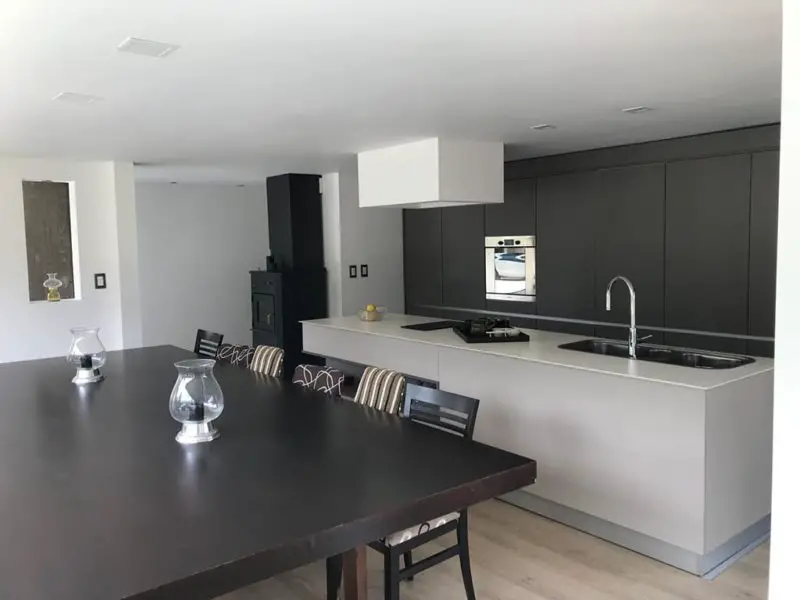

gorgeous all I can say is Saweet !